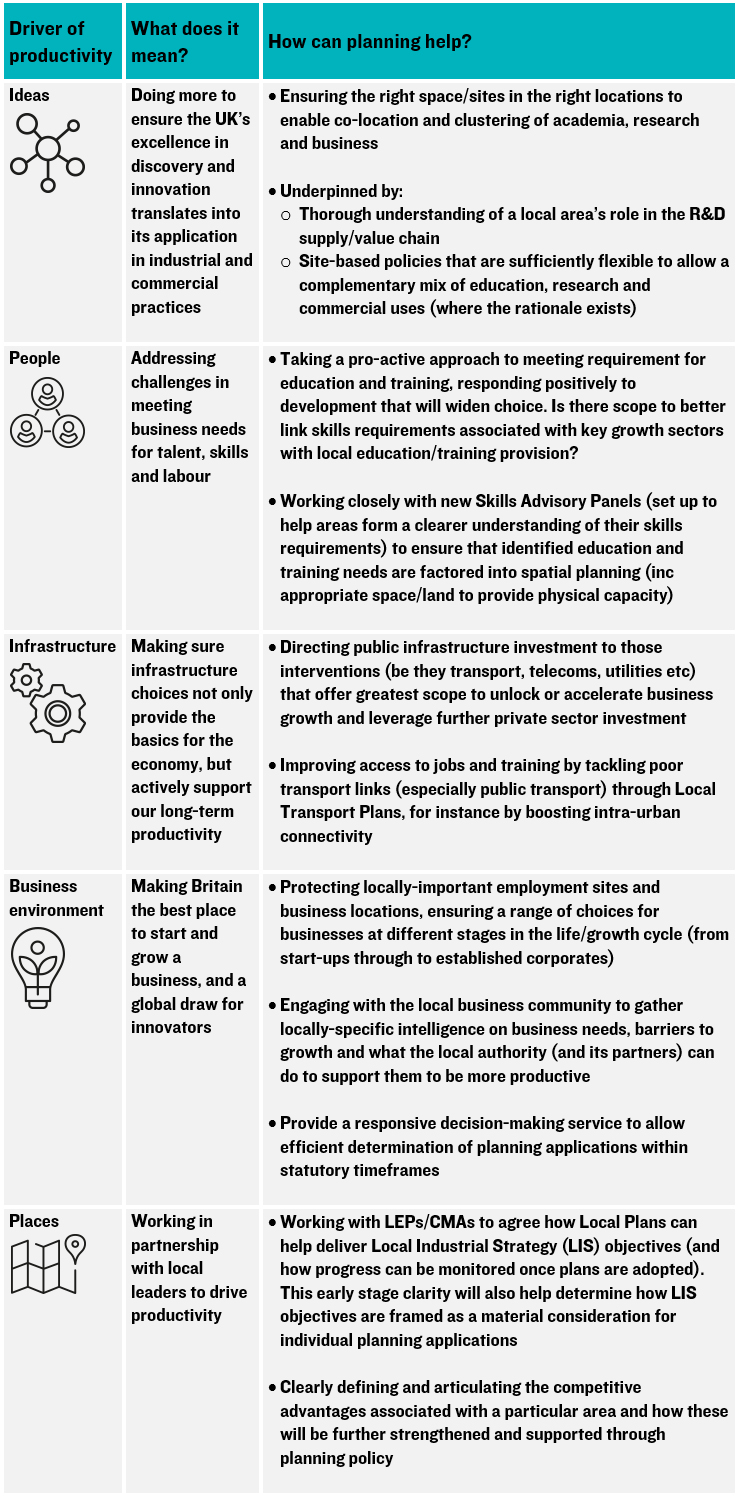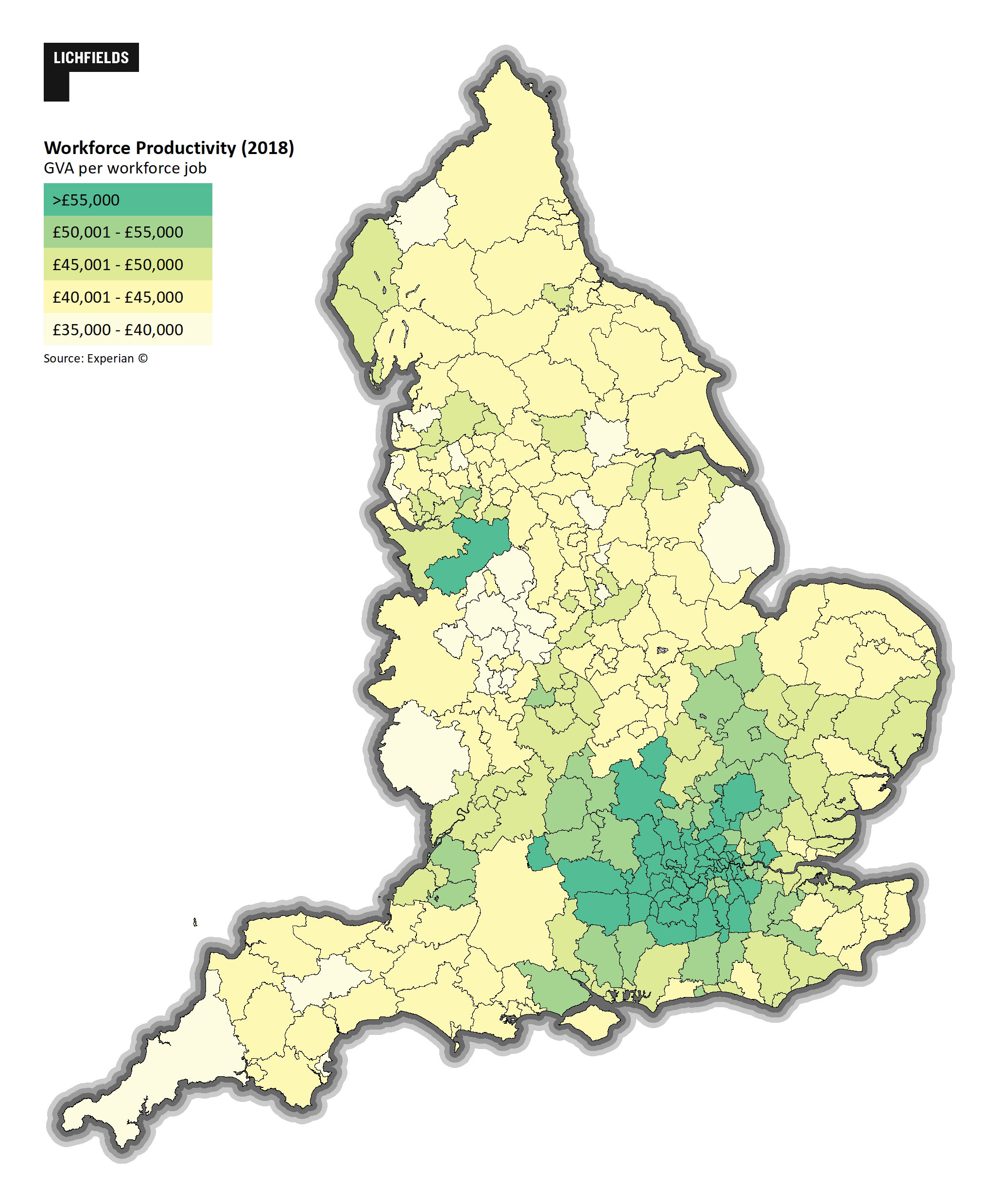The concept of productivity has undergone something of a renaissance in the past few years, to become an overriding theme in government economic policy and a popular topic in mainstream media and political debate.
The reason is simple; productivity – defined simply as the amount of work produced per working hour – is widely acknowledged as the main driver of long-term economic growth and higher living standards. Yet growth in productivity has fallen sharply over the past decade as the UK economy has recovered from the recession triggered by the 2008 financial crisis. In fact, the UK has recorded the most acute slowdown in output per hour worked of any leading western economy, and the national picture is complicated by a high degree of variation across different parts of the country (see figure below).
Productivity is not the most straightforward of concepts and the reasons behind this stagnation are complex. It can also be difficult to relate this problem to our everyday lives and pinpoint exactly how productive (or not) a worker, company or industry is.
Nevertheless, a national imperative to boost productivity runs through various strands of government policy, manifested most recently through the national Industrial Strategy which is framed around ‘5 foundations of productivity’ (see Lichfields summary).
It isn’t surprising therefore that government aspirations to boost productivity have made their way into the world of planning policy, with the revised National Planning Policy Framework (published in July last year) now making explicit reference (at para 80) to the planning system doing what it can to help the cause (see more in our recent Insight). Those areas already supporting high levels of productivity (as shown in the map above) and innovation will be expected to lead the way, and areas with lower productivity will need to consider how to close the gap.
Yet productivity is a concept rarely explored in any great detail in plan-making or decision-taking, so planning policy-makers and decision-takers will be asking questions about how this translates into tangible measures and interventions at a local level, in a way that is relevant to local circumstances and growth challenges.
At Lichfields, we are increasingly advising our clients on this key matter and offer the following insight into what planning policy and decision making can do to respond to the productivity challenge, framed around the Industrial Strategy 5 foundations:

Please get in touch to find out more and to discuss how we can help.







